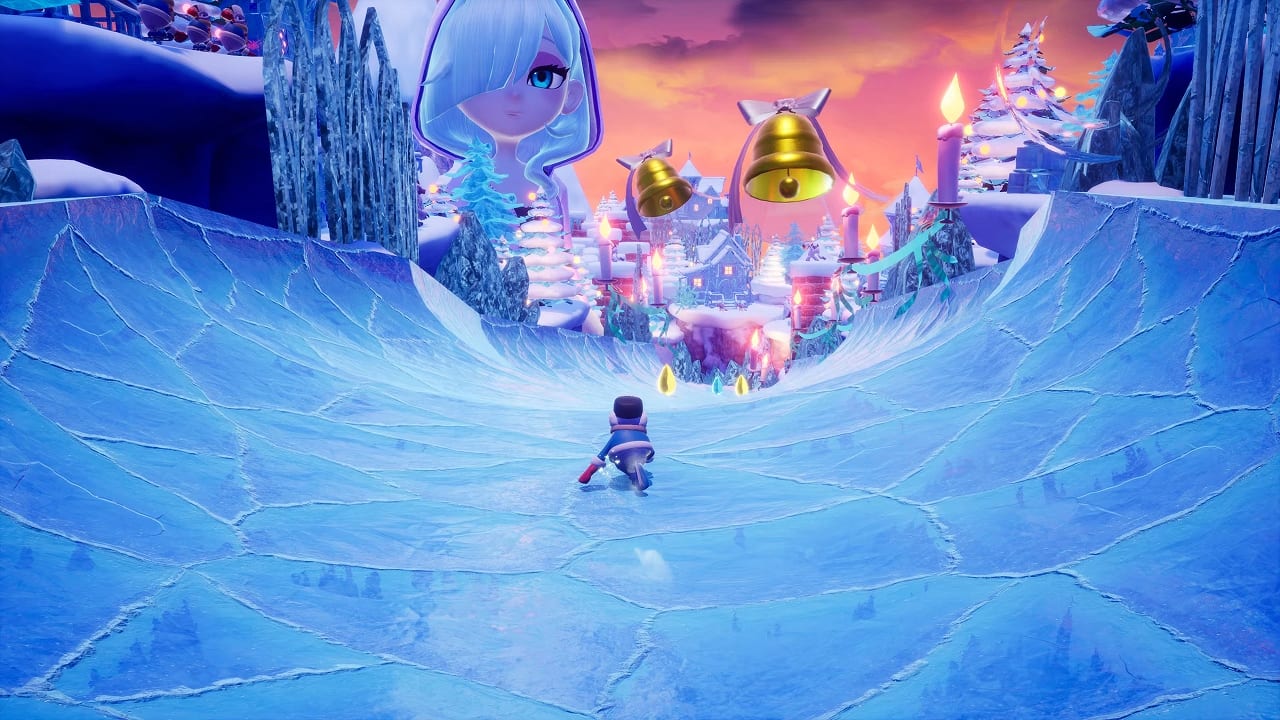
Wonderworld’s commitment to old-school platforming is almost admirable, but any nostalgia fades away quickly as you realise that its new ideas are all just so frustrating. Beyond that, you can swap between your three active costumes with the shoulder buttons in order to meet a puzzle with the correct outfit. You move or you jump, and when you can’t jump, the same button uses your costume ability. But what really startles me is that there are only two inputs in this game, without any movement tech attached to them. The protagonist feels like a lifeless puck as they throw themselves around levels, constantly shouting “Toh” or “Tah” every few seconds like the *good* old days. It’s charming, but it lacks the narrative nuance of a game like 2005’s Psychonauts, which touches on similar themes with greater depth, but actually feels good to play, too. Each world is defined by a non-playable character with a problem that you help solve by liberating the darkness from their dreamscapes. The story is as bonkers as you might expect, following two forlorn kids as they help fight “Negati” monsters afflicting humans with worry.

I wouldn’t recommend jumping from a modern platformer like Crash Bandicoot 4: It’s About Time or Super Mario 3D World to Balan Wonderworld, because the whiplash will be intense – it’s a gnarly step down from modern standards. I imagine many will compare the way it controls to the turn of the century platformers that Naka contributed to, but I feel fairly confident saying that, even today, those golden oldies feel better to play than Balan Wonderworld. It’s lovely to experience as an observer, but as soon as you put your hands on the controller, it’s game over.

#Balan wonderworld art full
This is all complemented by a catchy soundtrack full of quirky, themed bops. From O’Neill Cylinder farmhouse levels that unfurl before your eyes to the innards of an ancient tree, you’ll platform through level after gorgeous level across 12 worlds, looking for 80 intricate costumes to help you solve puzzles. The game’s aesthetics are unique and fascinating, as you might expect from the talent behind it. When I previewed the game I called it a “wondrous fever dream” and a “wholesome platforming acid trip” and those descriptors definitely hold up. The two sides of its virtual brain really aren’t talking to each other.



 0 kommentar(er)
0 kommentar(er)
